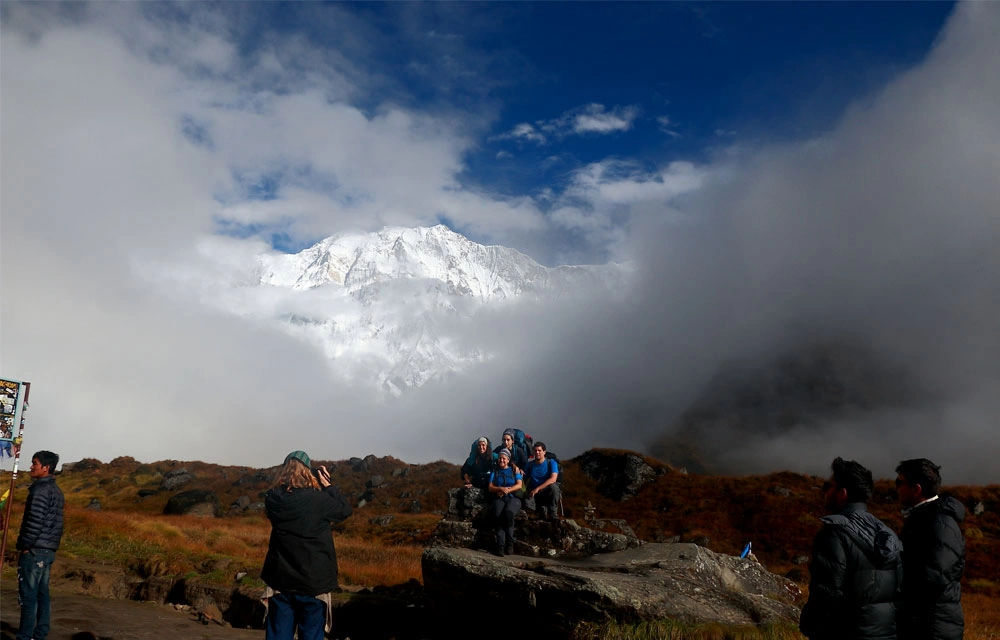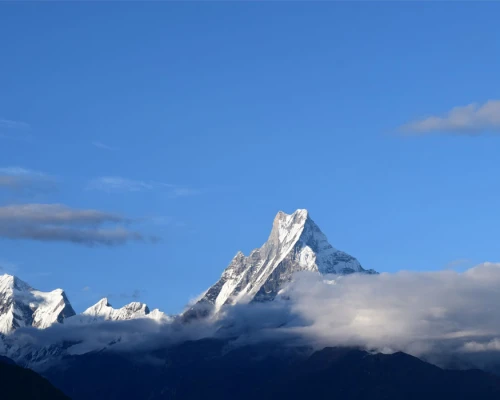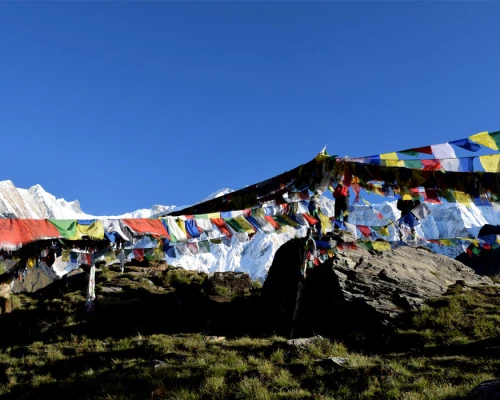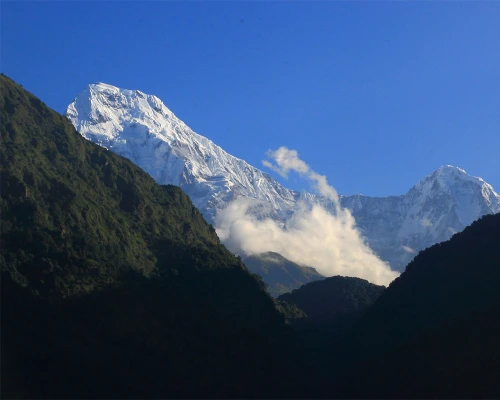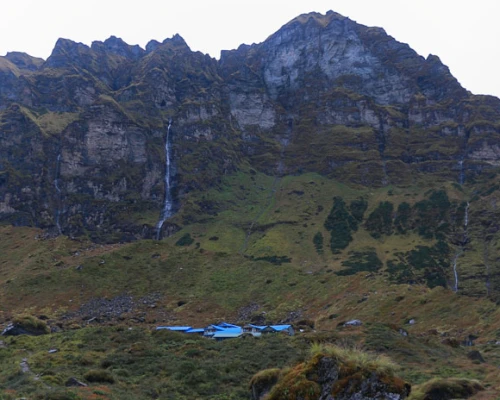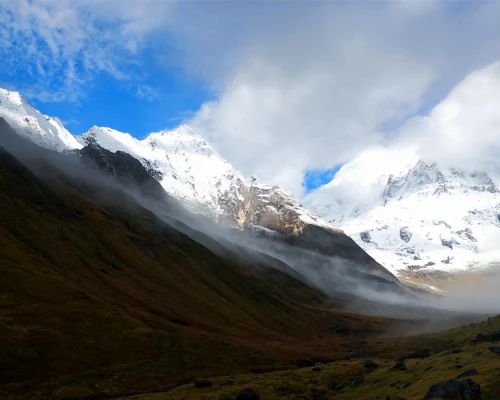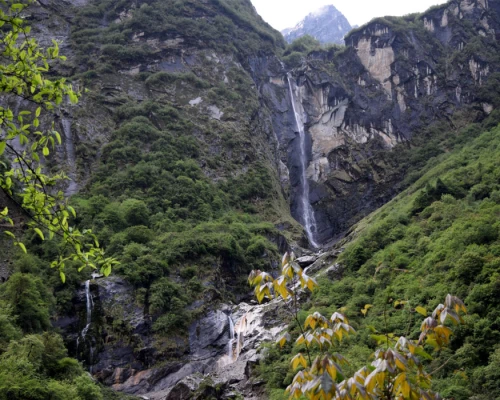At Sublime Trails, we operate one of Nepal’s most efficient and professionally managed short trekking packages—the 5-Day Annapurna Base Camp (ABC) Trek. This is our signature fast-track itinerary designed for travelers who want to reach Annapurna Base Camp in the shortest time possible without compromising on safety, service quality, or mountain experience.
The short Annapurna Trek itinerary is crafted by our expert team, who have spent years guiding clients through the Annapurna region. From logistics and permits to accommodations and daily operations, our team handles everything end-to-end, ensuring a seamless, worry-free journey.
Our 5-Day ABC Trek delivers the full Annapurna experience in a focused, high-value format. You’ll trek through traditional Gurung villages, cross three distinct climate zones, and stand at the foot of Mt. Annapurna I (8,091 m)—the world’s 10th-highest peak. Along the way, the iconic Mt. Machapuchhre (6,993 m) appears unbelievably close, guiding your path from the very first step.
Anyone accustomed to hiking 5-6 hours a day is fit enough to complete this shorter trek version. Proper planning and preparation ensure success even for beginners.
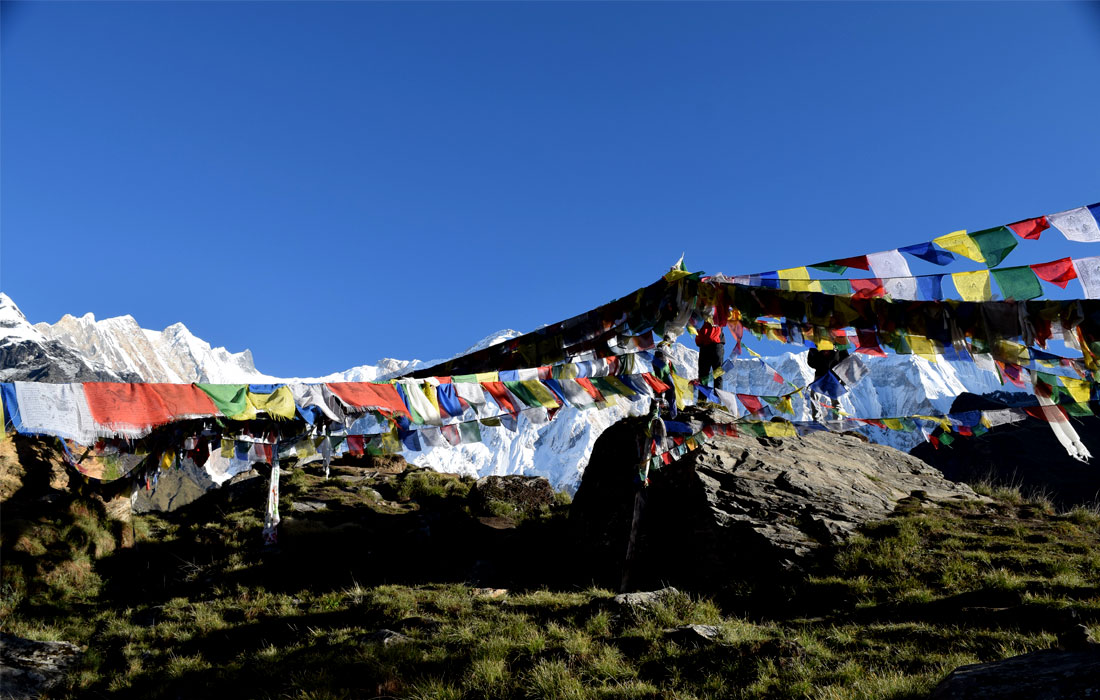
5 Days Annapurna Base Camp Short Trek Highlights
- Magnificent glimpses of Mt. Annapurna I, III, Annapurna South, Machhapuchhre, Hiunchuli, Gangapurna, and more.
- Awe-striking landscapes of Annapurna Conservation Area span from lower farmlands at Pokhara and Nayapul to the rugged yet aesthetic terrain of Annapurna Base Camp.
- The Annapurna Sanctuary is home to 27 different plant species and more than 100 mammal species.
- Mesmerizing sunrise view and sunset view over the towering massifs in the Annapurna region.
- Celebrate the unique culture and hospitality of the Gurung, Thakali, and Magar communities.
What to Expect on the ABC Short Trek with Sublime Trails
Starting from Pokhara, the Annapurna Base Camp 5-day Trek guided by Sublime Trails begins with a scenic drive to Jhinu Danda, followed by a direct ascent toward Machapuchhre Base Camp and Annapurna Base Camp.
Throughout the trek, you will stay in handpicked tea houses (mountain lodges) operated by local families. These lodges offer clean rooms, warm dining areas, and essential comforts. Basic amenities such as Wi-Fi, charging facilities, and hot showers are available in most villages for a small additional fee. While simple, these accommodations provide an authentic Himalayan experience and are the standard for all treks in the Annapurna region.
Meals on the route are freshly prepared at the tea houses. Expect hearty trekking staples like Dal Bhat, noodles, fried rice, momos, soups, eggs, Tibetan bread, pancakes, and warm beverages. We ensure that all meals included in the package are hygienic, nutritious, and suited for high-altitude trekking. Vegetarian options are widely available throughout the trail.
All necessary permits, including the Annapurna Conservation Area Permit (ACAP) and the TIMS Card, are arranged by our team before your trek begins. You won’t have to worry about administrative paperwork or queuing at permit offices—we handle everything for you.
Travel insurance is mandatory for this package. You must have a policy that covers emergency evacuation and high-altitude trekking up to 4,000 meters or higher. This ensures your safety in case of altitude sickness or unforeseen medical situations. Our team can guide you on choosing a suitable insurance provider if needed.
Why Book the Trek with Sublime Trails
Decade-Seasoned Mountain Experts: Our guides aren’t just licensed—they’re career mountain professionals who have been leading groups in the Annapurna region for 10+ years. They know every village, contour, shortcut, and hazard along the trail.
Included Gear at No Extra Cost: High-quality down jacket and sleeping bag provided for the trek. Down items are sanitized, warm to –20°C, and included free of charge.
Complete Safety Protocols & First Aid: All Sublime Trails guides carry first-aid kits and are trained in AMS response, oxygen use, evacuation procedures, and crisis handling.
All Logistics Taken Care Of: Transportation, permits, paperwork, taxes, staff wages, accommodation, and meals for guides/porters—everything handled seamlessly by us.
Ethical & Responsible Trekking: We follow strict porter welfare standards, support local communities, and prioritize eco-friendly practices on every trek.
Local Company, Global Standards: Sublime Trails is a Nepal-born, family-run operator delivering international-level service with decades of Himalayan expertise.
Some Key Facts About the Short Annapurna Trek
Maximum Altitude: 4,130 m (13,549 ft) at Annapurna Base Camp
Starting Altitude: Jhinu Danda, ~1,780 m
Total Trekking Distance: ~51–53 km
Daily Walking Distance: 6–14 km per day (average 10–12 km)
Trek Starting & Ending Point: Jhinu Danda (drive to/from Pokhara)
Difficulty Level: Moderate to challenging; steep stone steps, forest ascents, high-altitude walking
Accommodation: Basic tea houses with shared bathrooms, dining halls, hot showers, Wi-Fi, and charging (paid)
Communication: Mobile networks are strong up to Bamboo; weak/unavailable near Deurali, MBC, and ABC
Best Seasons: Spring (Mar–May) and Autumn (Sep–Nov)
Highest Overnight Stay: Annapurna Base Camp, 4,130 m
Total Elevation Gain: ~2,350 m from Jhinu to ABC
Temperature Range: Day 5–12°C; Night –5°C or lower at ABC
Required Permits: ACAP, TIMS
Time Required: 5 days, including drive-in/out
Risk Factors: Altitude sickness above 3,000 m; icy or avalanche-prone trails around Deurali
Water Availability: Boiled/filtered water in tea houses; bottled water discouraged
Electricity: Hydropower available; charging costs extra
Trail Conditions: Well-established trail; forests, stone steps, river crossings, wooden bridges, seasonal avalanche zones


